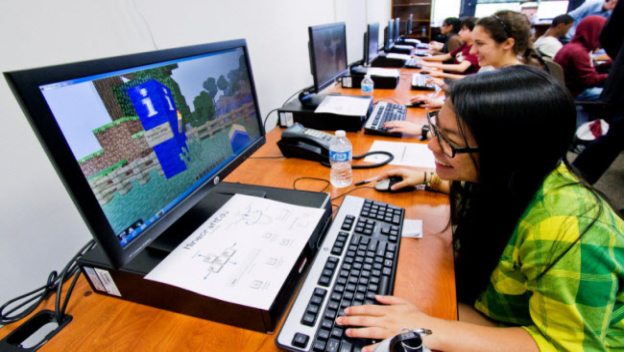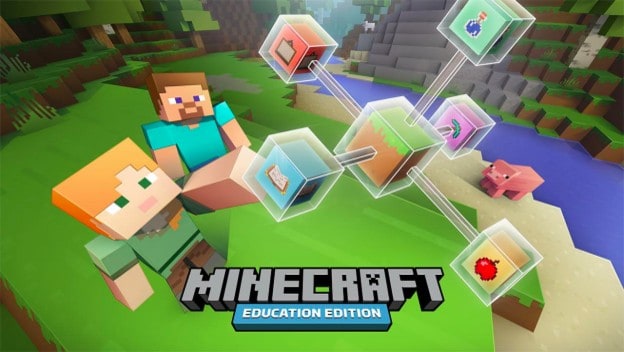Back in January Microsoft announced that they had a new version of Minecraft in development called Minecraft: Education Edition . It is not much different from the original Minecraft , the main difference being the “Classroom Mode companion app, enabling educators to manage world settings, communicate with students, give items, and teleport students in the Minecraft world,” as explained in Microsoft’s announcement , “it displays a map view of the Minecraft world, a list of all the students in the world, a set of world management settings and a chat window. There is even a Minecraft clock to show time of day in the world. Classroom Mode offers educators the ability to interact with students and manage settings from a central user interface.”
It went into beta testing during the summer and officially launched on the first of November. A little late for the school year, but now that a few weeks have passed a few people have managed to form their opinion about it. Especially Tom Bennett, teacher, author, and Director of researchED who shared his thoughts with The Times. Bennett made it very clear that he doesn’t think Minecraft: Education Edition is a good idea, “I am not a fan of Minecraft in lessons. This smacks to me of another gimmick which will get in the way of children actually learning. Removing these gimmicky aspects of education is one of the biggest tasks facing us as teachers. We need to drain the swamp of gimmicks. I would say to teachers: ‘Do you need to use this game or is there something that is cheaper and better – like books?’ By offering a game and a gimmicky way of learning a subject, you run a real risk of children focusing on the wrong thing.”
Bennett has spoken before about alternative teaching methods with technology and his opinion hasn’t changed one bit. In an interview with The Telegraph , he explained how teachers ought to be questioning new methods and theories, particularly with technology, “you hear people say that children must have iPads in order to be 21st century learners, but when you look at the research that tries to substantiate this claim, it’s normally written by iPad manufacturers and technology zealots, and that’s fine, but don’t pretend it’s research. Children don’t have the time to waste on that rubbish, especially poor children.”
The reason I bring up both interviews is to more clearly highlight where Bennett’s main concerns lie. He associates Minecraft in the classroom with cost (the money for this technology could be spent elsewhere), and unfounded research on beneficial education methods. For the first concern of cost, I am all for schools spending money in the right places and worrying more about the quality of teachers employed rather than than how many laptops per child. That said, those teachers deserve to have the necessary tools in order to teach what they need to. This is the 21st century and like it or not, technology is very huge part of our lives. Children need to learn how to use it, and use it to their advantage. The basics won’t cut it anymore, and Minecraft is the perfect starting point. Minecraft can teach 3D rendering, for example. A huge advantage for anyone working in design, engineering, landscaping, medical technology, and architecture, to name a few.

For Bennett’s second concern, the unfounded research of the benefits of Minecraft in education, it’s simply a display of ignorance in what Minecraft is. Books are clearly acceptable to Bennett, yet Minecraft can teach the same things if not more on an interactive and practical level. The game is an especially useful tool because it is an incredibly user-friendly method of building virtual models. Not only that, Minecraft teaches resource management, teamwork, spatial awareness, 3D rendering, research, circuitry, etc. The list of this game’s possible usefulness for education is extensive and could fill a dissertation.
Needless to say, Bennett clearly doesn’t understand the topic he is addressing. As a “technology zealot” myself, I’m clearly biased, but any gamer with children can tell you how Minecraft and other video games have helped their kids move forward in school too. It is worth the cost and a tool all teachers deserve to have the option to use. It can teach so much more than Bennett seems to believe.
